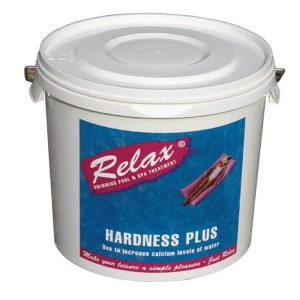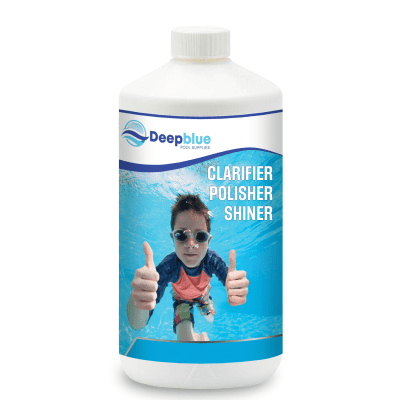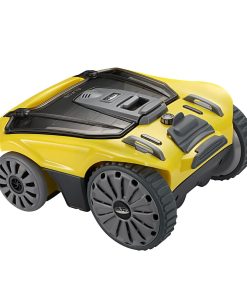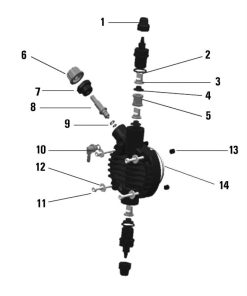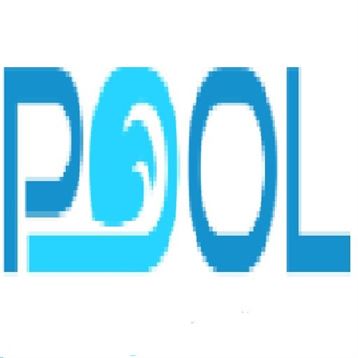Blogpool, Maintenance, Swimming Pool, Water Testing
Pool Cleaning Basics: How to Keep Your Pool Sparkling Clean
Regular swimming pool cleaning creates the necessary conditions for backyard enjoyment. The improper maintenance of pools creates both unsightly conditions and dangerous environments for bacterial and algae growth. The maintenance of pool cleanliness demands scheduled cleaning routines and balanced water chemistry management. Read this complete guide that teaches you effective pool cleaning methods for achieving crystal-clear swimming pool results.
Why Regular Pool Cleaning is Important
Pool cleanliness exists for safety reasons while also maintaining visual appeal. Safety risks emerge from pool contamination while algae growth produces dangerous slipperiness that increases chances of accidents. Regular maintenance allows your pool equipment to operate efficiently which increases its lifespan while reducing future repair expenses.
Daily Pool Maintenance Tasks
To maintain a clean pool, start with these daily tasks:
A pool skimmer helps you collect leaves bugs and debris which float on the pool surface. The daily skimming operation stops floating objects from settling below the water surface and creates a more visually appealing swimming environment.
The function of removing debris before it reaches the pump depends on clearing out the skimmer baskets. The proper operation of water circulation depends on maintaining clear skimmer baskets.
Check Water Levels: The water level should sit at about the midpoint of the skimmer. When water exceeds the skimmer level it will create floating debris. The pump operation will become dry when there is insufficient water.
Weekly Pool Maintenance Tasks
Perform these weekly tasks to maintain your pool in an excellent state above daily maintenance procedures:
Use a pool brush to thoroughly scrub all surfaces of the pool including its walls and floor. The surface of the pool attracts dirt and algae which sticks most strongly to corners and steps thus brushing the entire area keeps these sections clean.
A pool vacuum serves to extract dirt along with leaves and debris that settles at the bottom. You can use an automatic pool cleaner or a manual vacuum. Weekly vacuuming eliminates floor debris completely while improving water circulation patterns throughout the pool.
Test Water Chemistry: You can evaluate your pool water chemistry through the use of pool test kits together with test strips. Examine these three water measurement values:
pH levels: 7.2-7.6
The alkalinity level should measure between 80-120 ppm.
The chlorine concentration needs to remain between 1-3 ppm.
Balancing Pool Chemicals
The proper management of pool water chemistry serves two main purposes: it stops algae development while protecting the pool structure and creating clear water conditions. Here’s a quick overview of how to adjust the chemical levels in your pool:
Add muriatic acid or pH decreaser when pH reaches 7.6 or higher according to product directions. You should use sodium carbonate (soda ash) to increase the pH level if it falls below 7.2. The ideal range for pH measurements should be 7.2 through 7.6.
Chlorine: Chlorine kills bacteria and algae, so it’s important to keep the levels between 1-3 ppm. The pool requires additional chlorine application when the current levels fall below the recommended amount based on pool size. Regularly shock the pool with a higher chlorine concentration every couple of weeks especially after rain events and large gatherings.
Shock dosage: Use 500g of chlorine shock per 10,000 liters of water.
The alkalinity functions as a stabilizing factor that prevents pH levels from changing. The solution requires baking soda to address low alkalinity levels. To increase the alkalinity by 10 ppm in a 10,000-liter pool you should add 1.5 kilograms of baking soda.
Monthly Pool Maintenance
Regular pool maintenance requires additional procedures every month to preserve both cleanliness and operational efficiency.
Regular maintenance of filters requires a monthly check regardless of the type which includes cartridge sand or diatomaceous earth (DE) filters. Regular cleaning of cartridge filters requires you to remove the cartridge then use a hose spray to eliminate dirt accumulation. The manufacturer provides instructions for performing backwashing operations on both sand and DE filters.
Check the Pool Pump and Equipment: Inspect your pool’s pump, heater, and other equipment for any signs of wear, leaks or noise. It is therefore very important to ensure that your pool equipment is well maintained to help in the prolongation of the pool system.
Long-Term Pool Care
In the last step, it is also important to attend to some of the long term pool maintenance practices that will help in preventing future damages and keep the pool in good condition:
Check the Pool Surface: It is possible that the pool walls, tiles and liner may be damaged in the course of time. If there are any cracks, loose tiles or any other signs of wear, they should be fixed to prevent further problems.
Winterization of the Pool: When you are about to close your pool for the winter, ensure that the water level is reduced, the pump and filter are drained and the pool is covered. You will be able to save yourself from incurring cost of repairs in future.
Some Extra Tips on How to Keep the Pool Clean
Using a Pool Cover: When the pool is not being used, it should be covered to keep off debris and prevent water from evaporating.
Water Circulation: Operating your pump for at least 8 hours per day ensures that the water is filtered well to prevent stagnation and algae formation.
Weather Conditions: Weather conditions such as heavy rains can cause changes in the water chemistry of your pool. If there has been a storm, check the water and make any necessary adjustments to the chemical levels.
Conclusion
Your pool will remain clean, clear and inviting throughout the season if you take care of it properly. It is therefore important to clean your pool regularly and maintain the water chemistry to ensure that your pool is safe and healthy. If any of the chemicals needed are mentioned please look on the website or contact the friendly support team for advice. Remember that regular maintenance not only improves the looks of the pool but also helps to increase the lifespan of the pool equipment and also help in preventing costly repairs.
Some products you might be interested in:
Emergency Preparedness
Moreover, preparedness for accidents is also vital in hot tub safety.
First Aid Kit: A first aid kit should be placed within reach to attend to small cuts and scrapes. The kit should have bandages, antiseptic wipes and burn ointment for any accidents that may occur.
Signs of Overheating: Dizziness, nausea, and heavy sweating are some of the symptoms of over heating in the hot tub. Immediately get out and drink water and seek shade.
Plan for Electrical Faults: Ensure that all people know the emergency off switch of the hot tub. If a person gets an electric shock, stop the power and call the emergency services.
Summary
Thus, these hot tub safety tips will help in the prevention of accidents in the hot tub and at the same time enhance the fun of the users. Whether you are alone or with your family and friends, safety measures should be taken to avoid any form of accidents or injuries while using the hot tub. With the right measures in place, your hot tub can be a luxurious place for you to relax for many years. If you need any of the chemicals or tools mentioned please look at our website or contact The Pool Cleaners’ friendly support team for advice.
Some products you might be interested in:



